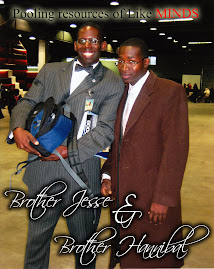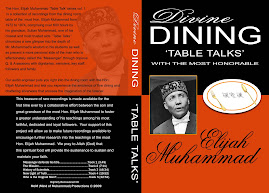The reawakening of Afro-Argentine culture
Descendants of slaves are starting to assert their identity but it's not easy in South America's whitest country.
BUENOS AIRES — "Liberty has no color" read the signs held outside a Buenos Aires city courthouse. "Arrested for having the wrong face," and "Suspected of an excess of pigment," said others. And more to the point: "Enough racism."
A black street vendor was allegedly arrested without cause or proper procedure earlier this year, prompting this August hearing of a habeas corpus appeal. But leaders of the Afro-Argentine community say this moment goes beyond any particular man or incident, calling it a watershed case that brings to trial the treatment of blacks in Argentina.
“It's not about this prosecutor or that police officer, but rather an institutionally racist system," said Malena Derdoy, the defendant's lawyer.
Argentina is generally considered the whitest country in South America — 97 percent, by some counts — possibly more ethnically European than immigrant-saturated Europe. There was once a large Afro-Argentine presence but it has faded over the epochs. Now, for the first time in a century and a half, Argentine descendants of African slaves are organizing and going public to assert their identity.
They're winning eyes and ears outside their community, and there's a burgeoning corpus of films and books exploring the obscured questions of their history and current status. But after many generations of Argentine society's often willful denial of their very existence, even apparently simple demands like inclusion in the national census prove complicated.
“We've been exiled from the collective memory of Argentina,” said Juan Suaque, a seventh-generation descendant of Argentine slaves. “It's as if you pass someone in the street and you have to explain your whole life, what and who you are.”
It's past midnight at the jubilant one-year anniversary party of Associacion Misibamba, the leading Afro-Argentine cultural organization of which Suaque is president. The gathered crowd practices Afro-Argentine “candombe” music and dance as they have for centuries. Women and girls of all ages gyrate the classic gesture — hand to hip, hand to forehead — encircled by the frenetic syncopation of conga drums.
This classic art form has been gaining in popularity in recent years, among white Argentines at least as much as black ones. Associacion Misibamba recently performed their candombe in a major feature film, a period piece set in 19th-century Buenos Aires. That period was a time — a distant memory just now being reawakened — when African expressions were an everyday part of Argentine life. At the beginning of the 1800s, black slaves were 30 percent of the population of Buenos Aires, and an absolute majority in some other provinces. The first president of Argentina had African ancestry, and so did the composer of the first tango. Even the word “tango,” like many other words common in the Argentine vocabulary, has an African root; so do many beloved foods, including the national vices of the asado barbecue and dulce de leche.
The abolition of slavery was a slow process that spanned the better part of the 19th century. At the same time, under the government's explicit and aggressive policy of whitening the race — to replace “barbary” with “civilization,” in the famous phrase of the celebrated president Sarmiento — Afro-Argentines were inundated by European immigration, the largest such influx in the Americas outside of the United States. Blacks had dwindled to only 1.8 percent of Buenos Aires by the 1887 census, after which their category was replaced with more vague terms like “trigueno” — “wheaty.”
Page 2 of 2
“It's part of Argentine common sense that there are no blacks, that their entire culture had disappeared toward the end of the 1800s,” said anthropologist Pablo Cirio. “That's all a lie.”
A 2005 pilot census estimated that about 5 percent of the national population has African ancestry — about 2 million people. The study found that population to be worse-off by health and socioeconomic indicators than the rest of Argentina, as has presumably been the case since slavery.
Unlike the census of 1887, performed in a political atmosphere that was eager to efface the African presence in Argentina, this survey tried to detect any African ancestry in a household, whether or not its members appeared black. For that reason, the survey's architect and community activists have preferred the term "Afro-descendant" to the narrower "black."
The survey was performed with help from the national census bureau and World Bank funding, at the urging of local Afro-Argentine activists who hoped to have the “Afro-descendant” category re-inserted into the Argentine census in 2010 and count themselves as a distinct segment of the populace after a century missing.
Soon afterward, DNA tests of blood samples in several Buenos Aires hospitals bolstered the pilot census' result with a very similar percentage of genes traceable to Africa. Moreover, a much higher number — about 10 percent — was obtained by testing mitochondrial DNA, which traces maternal ancestry. This is consistent with the historical conjecture that many black men were lost after being sent to the frontlines of 19th-century wars, and Afro-Argentines assimilated into the white population when the remaining women mixed with the hordes of European males who had come to Argentina to work. But now the census initiative seems to have stalled. There are fatal questions about its potential validity and value as a measurement tool in a society where African roots have been so long hidden. Many Argentines aren't aware of black ancestors they may have, and the survey's researchers noted the difficulty in getting people to self-identify as Afro-descendants when the label has always carried such a strong stigma.
The pilot census had to be preceded by aggressive public information campaigns in the sample areas, in order to sensitize households to the concept of African ancestry and give them time to research their family trees. But most agree that without such a campaign and trained researchers giving face-to-face interviews, the usual government census wouldn't accurately reflect the Afro-descendant population in Argentina.
Anthropologist Cirio notes that, faced with the hostility of their surrounding society, “the party most interested in making blacks invisible have been blacks themselves.” Those who maintained African cultural traditions decided, since the end of the 19th century, to conceal these traditions from the public eye. “They did this not to forget their past, but to preserve it,” he said, adding that Associacion Misibamba is one of the first organizations to “break the
silence.”
silence.”
In some cases the cultural insulation has worked and enabled the reflorescence happening today. But more commonly, the effect has been a large-scale amnesia in Argentine society. “Any of us could be Afro-descendants, perhaps without knowing it,” said Cirio with an ironic smile.









































http://www.misibamba.org
http://bakongocandombeafroargentino.blogspot.com/
http://movimientoafrocultural.blogspot.com/